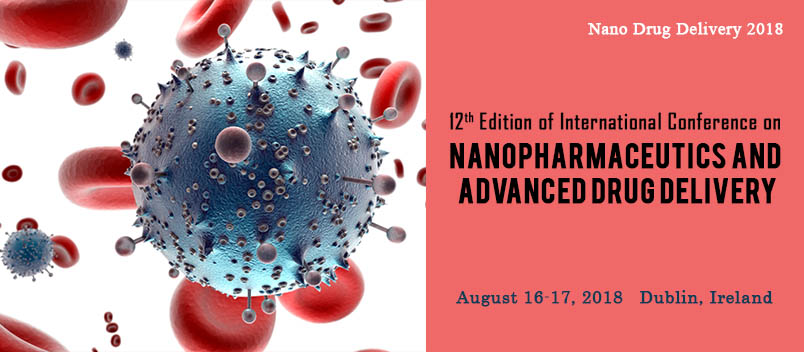Opinion Article, J Bioeng Med Technol Vol: 4 Issue: 2
Innovative Biomaterials for Medical Device Development
Faisal Devender*
1Department of Bioengineering, Stanford University, Stanford, United States of America
*Corresponding Author: Faisal Devender,
Department of Bioengineering, Stanford
University, Stanford, United States of America
E-mail: faisal654@deven.edu
Received date: 22 May, 2023, Manuscript No. JBMT-23-107418;
Editor assigned date: 24 May, 2023, Pre QC. JBMT-23-107418 (PQ);
Reviewed date: 15 June, 2023, QC No. JBMT-23-107418;
Revised date: 22 June, 2023, Manuscript No. JBMT-23-107418 (R);
Published date: 29 June, 2023, DOI: 10.35248/jbmt.1000071
Citation: Devender F (2023) Innovative Biomaterials for Medical Device Development. J Bioeng Med Technol 4:2.
Description
Advancements in medical device technology have revolutionized the healthcare industry, significantly improving patient outcomes and quality of life. Key to these advancements is the development of innovative biomaterials that possess unique properties, making them ideal for various medical applications. This study explores the current landscape of biomaterials used in medical device development, highlighting their potential benefits and challenges. It also discusses cutting-edge biomaterials and their potential impact on future medical device innovation.
The demand for advanced medical devices continues to grow as the global population ages and healthcare needs increase. Biomaterials play a key role in the development of medical devices, providing the necessary mechanical, biological, and chemical properties for optimal device performance. This manuscript aims to provide an overview of the most innovative biomaterials that are currently being explored for medical device applications.
Types of biomaterials
Polymers: Synthetic polymers, such as polyethylene, polyurethane, and polypropylene, have been widely used in medical devices due to their versatility, biocompatibility, and ease of manufacturing. Recently, biodegradable polymers, like (Poly Lactic-Co-Glycolic Acid) (PLGA), have gained attention as they eliminate the need for device removal and reduce long-term complications.
Metals: Titanium and stainless steel are commonly used in orthopedic implants and cardiovascular devices due to their excellent mechanical properties and biocompatibility. However, challenges, such as corrosion and metal ion release, have led researchers to explore new metal alloys and surface treatments to enhance performance.
Ceramics: Bioceramics, like alumina and zirconia, are used in orthopedics and dental applications for their excellent wear resistance and biocompatibility. Recent innovations include porous ceramics for better integration with the surrounding tissue and improved load distribution.
Innovative biomaterials
Shape Memory Polymers (SMPs): SMPs have the unique ability to to return to their original shape after being deformed. This property makes them ideal for minimally invasive medical devices, such as stents and catheters, as they can be delivered in a compact form and expanded within the body.
Hydrogels: Hydrogels are highly absorbent and have excellent biocompatibility, closely resembling human tissues. They are being explored for wound dressings, drug delivery systems, and tissue engineering applications, offering a promising platform for regenerative medicine.
Graphene: Known for its exceptional mechanical strength, electrical conductivity, and surface area, graphene has potential applications in neural interfaces, biosensors, and drug delivery systems. Research is ongoing to harness graphene's properties while ensuring its biocompatibility and long-term safety.
Shape Memory Alloys (SMAs): SMAs, such as nitinol, have the unique ability to revert to a predetermined shape when exposed to heat. These alloys are used in devices like self-expanding stents and orthodontic wires, offering greater precision and control during medical procedures.
Nanocomposites: Combining nanoparticles with traditional biomaterials can enhance their mechanical properties, biocompatibility, and drug delivery capabilities. Nanocomposites are being investigated for applications in tissue engineering, bone scaffolds, and antimicrobial coatings.
Challenges and future directions
Biocompatibility: While significant progress has been made in developing biocompatible biomaterials, challenges remain, especially in long-term safety assessments and immune responses. Robust biocompatibility testing and in vitro/vivo studies are essential for successful medical device development.
Degradation and stability: Biodegradable biomaterials are attractive for some applications, but their controlled degradation rate and stability are essential factors to ensure device effectiveness and longevity.
Manufacturing complexity: The incorporation of innovative biomaterials may introduce complexities in the manufacturing process, leading to increased production costs and regulatory challenges.
Multi-functionality: The next frontier in medical device development lies in biomaterials with multi-functional capabilities, such as smart materials that can respond to specific physiological conditions or deliver therapeutic agents on-demand.
Conclusion
Innovative biomaterials hold great potential for the advancement of medical devices, enabling more effective treatments and better patient outcomes. By addressing challenges related to biocompatibility, degradation, and manufacturing complexity, researchers can unlock the full potential of these materials. Continued collaboration between scientists, engineers, and healthcare professionals is essential to push the boundaries of medical device development and usher in a new era of personalized and precise healthcare.
 Spanish
Spanish  Chinese
Chinese  Russian
Russian  German
German  French
French  Japanese
Japanese  Portuguese
Portuguese  Hindi
Hindi 
